Furniture
Tarantula Bedding
Available from retailer Ggtrends.An appropriate gift for the arachnophile in your life.



Posted By: Alex - Sun Jul 19, 2020 -
Comments (2)
Category: Furniture, Insects and Spiders
Tuberosity Meter
In 1960, Thomas Scoville received a patent for a device for measuring tuberosity. He explained that the purpose of measuring tuberosity was to improve the fit of chairs:
Even after looking up the meaning of the word 'tuberosity' in the dictionary, it took me a while to figure out what exactly Scoville's device was measuring, and what it possibly had to do with chairs. Because the dictionary simply defined tuberosity as a 'rounded swelling.' Some more googling revealed that Scoville must have been referring to the Ischial tuberosity, or 'sitting bone'. As defined by wikipedia, this is:
Posted By: Alex - Sun May 24, 2020 -
Comments (1)
Category: Body, Furniture, Inventions, Patents, 1960s
Trapped 5 days in folding bed
Unfortunately, I can't find any info about how Leon Colby fared after his 5-day ordeal trapped in a folding bed.The situation seems like an absurdist, real-life variation on the premise of Stephen King's Gerald's Game.

Lancaster Intelligencer Journal - Oct 10, 1977
Some googling reveals that, while being trapped in a folding bed may sound bizarre, it's disturbingly common. See here, here, and here.
Posted By: Alex - Tue May 19, 2020 -
Comments (2)
Category: Accidents, Furniture, 1970s
Coffin Cradle
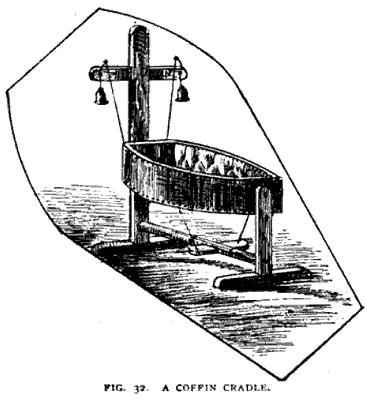
From the Strand Magazine - Vol 8, 1894:
Posted By: Alex - Tue May 12, 2020 -
Comments (2)
Category: Babies, Death, Furniture
Water-Dispensing Furniture
Thomas Mullenaux of San Pedro, CA was recently granted a patent (No. 10,626,581) for furniture that gathers water from the air via a dehumidifier, collects it in a built-in reservoir, and then allows a person to drink it through a retractable hose.However, in his patent application, Mullenaux never explains why anyone would want or need 'water-dispensing furniture'. I guess it might be useful for those who are too lazy to walk to their kitchen to get a glass of water.


Posted By: Alex - Sun May 03, 2020 -
Comments (2)
Category: Furniture, Inventions, Patents
Anti-Aging Chair
Hattie Wiener received patents in 1991 and 1993 for an anti-aging chair. The two patents were basically variations on the same theme. The 1991 version of the chair is on the left below, and the 1993 version is on the right.Actually, in the patent write-ups she didn’t mention the anti-aging properties of the chair, but that’s how she described it to the media. She also promoted herself as an “anti-aging consultant.”
The idea was that the chair would force a person to sit upright, and thereby improve their posture and circulation. And this, in turn, would help a person stay healthy as they aged.
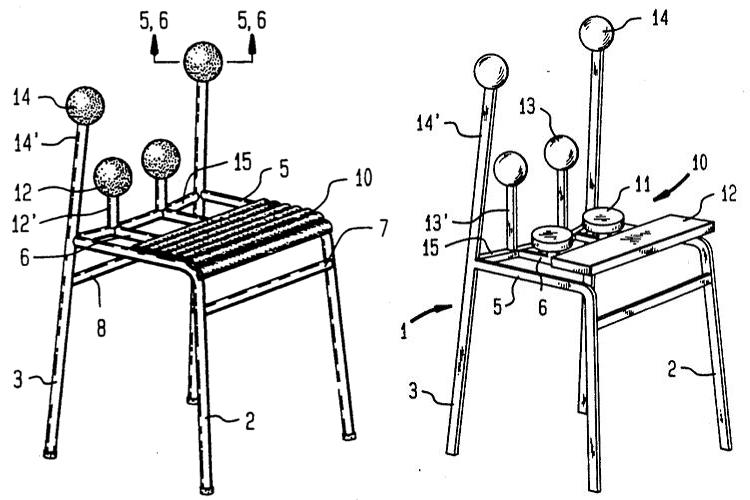
She hoped to sell the chair for $600. A lot for a fairly minimalist piece of furniture. But as far as I can tell, it never made it to market.
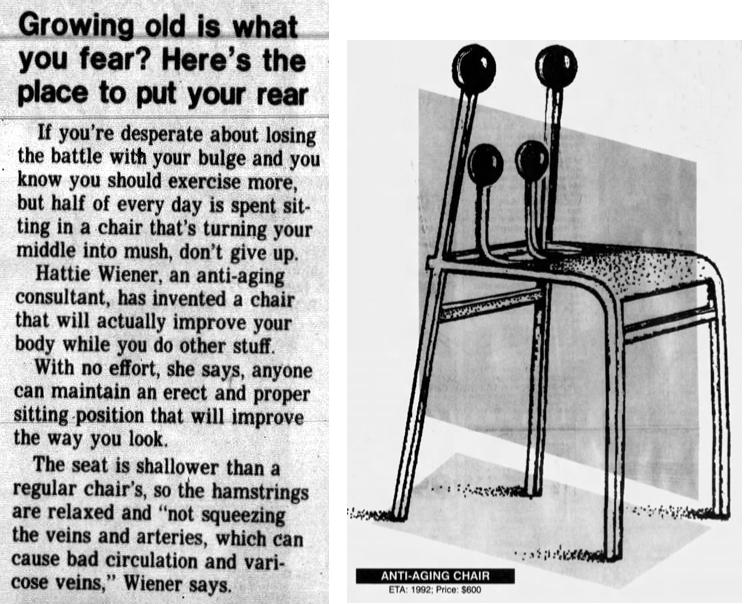
(left) The Desert Sun - Oct 27, 1991; (right) Austin American-Statesman - Nov 10, 1991
Hattie was in her 50s when she patented the chair. Fast-forward almost thirty years, and now, in her 80s, she's still in the news, but for a very different reason. She's become known as the "Tinder Granny," due to her enthusiasm for using the dating app Tinder to find hookups with younger men.
She's certainly defying the stereotypes of age. But I'm disappointed that in none of the recent pictures of her is she using her anti-aging chair. In fact, in the photo below she's totally slouching.
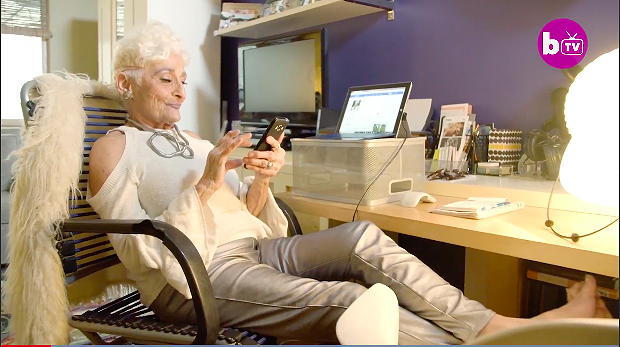
Hattie Wiener, age 83
Posted By: Alex - Sun Apr 12, 2020 -
Comments (2)
Category: Elderly and Seniors, Furniture, Inventions, Patents
Advertising Chairs
Back in 2018, Paul posted about an "advertising chair" patented in 1910. As a person rocked in it, advertisements scrolled in the armrests.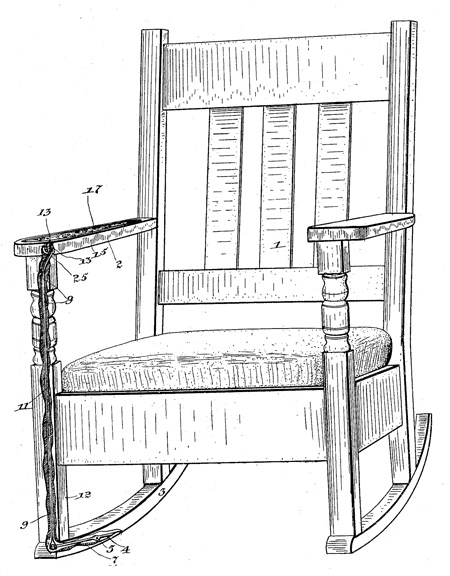
Patent No. 958,793 (1910)
I recently discovered that this invention wasn't a one-off. In the early twentieth century, inventors were actively competing to perfect advertising chairs and inflict them on the public. I was able to find four other advertising chair patents (and there's probably even more than this). To my untrained eye, they all look very similar, but evidently they were different enough to each get their own patent.
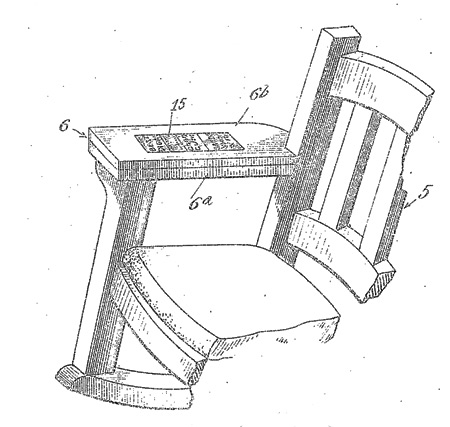
Patent No. 934,856 (1909)
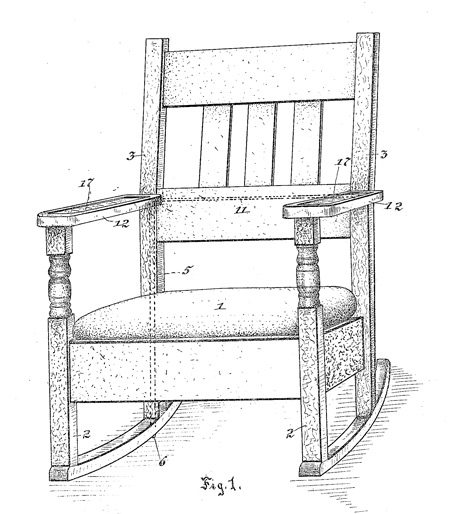
Patent No. 993,397 (1911)
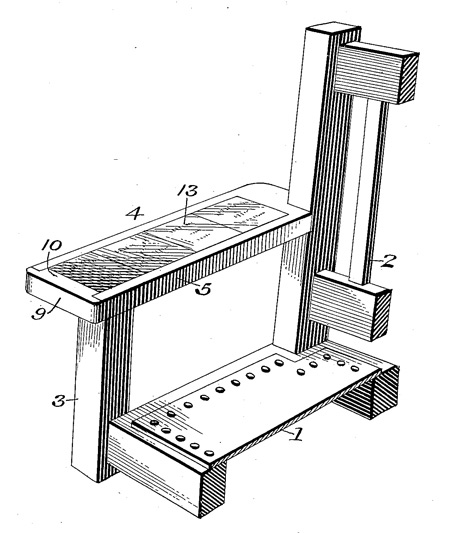
Patent No. 1,094,154 (1914)
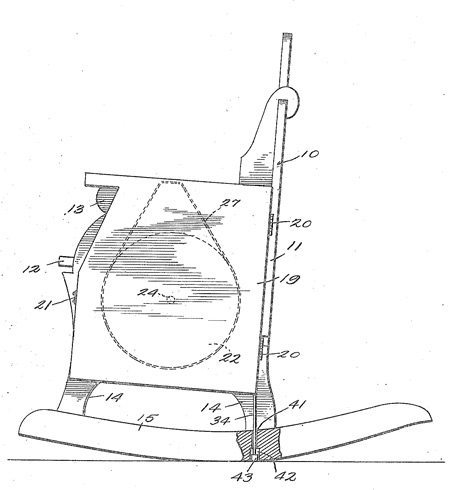
Patent No. 1,441,911 (1923)
A newspaper search brought up an 1895 article that described advertising chairs as the "latest in advertising." It also explained that the concept was to put these chairs in various places where there were captive audiences, such as "hotel lobbies, public libraries, depots and in fact in all places where tired humanity is used to taking a quiet little rest during the day."
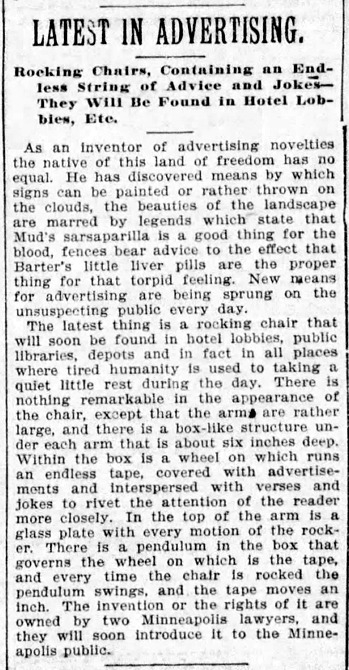
Minneapolis Star Tribune (Dec 8, 1895)
But although entrepreneurs may have been keen to build advertising chairs, the public was evidently far less enthusiastic about them. An editorial in the Kansas City Journal (reprinted in Printer's Ink magazine - Jan 2, 1901) described an advertising chair as "comfortable enough physically, but mentally it is a torture... Just who invented the advertising chair is not known. He has no reason to be proud."
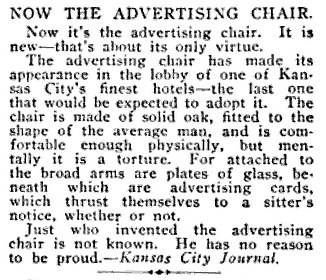
There must have been a number of these advertising chairs in existence, but I'm unable to find any surviving examples of them. Searching eBay, for instance, only pulls up chairs with advertisements printed on them.
Posted By: Alex - Tue Feb 18, 2020 -
Comments (4)
Category: Furniture, Inventions, Patents, Advertising
Bull-sit Chair
Yet another way to make blue jeans weird.

Source: Catawiki auctions
Posted By: Alex - Wed Jan 16, 2019 -
Comments (1)
Category: Furniture, Denim
World’s Largest Sofa
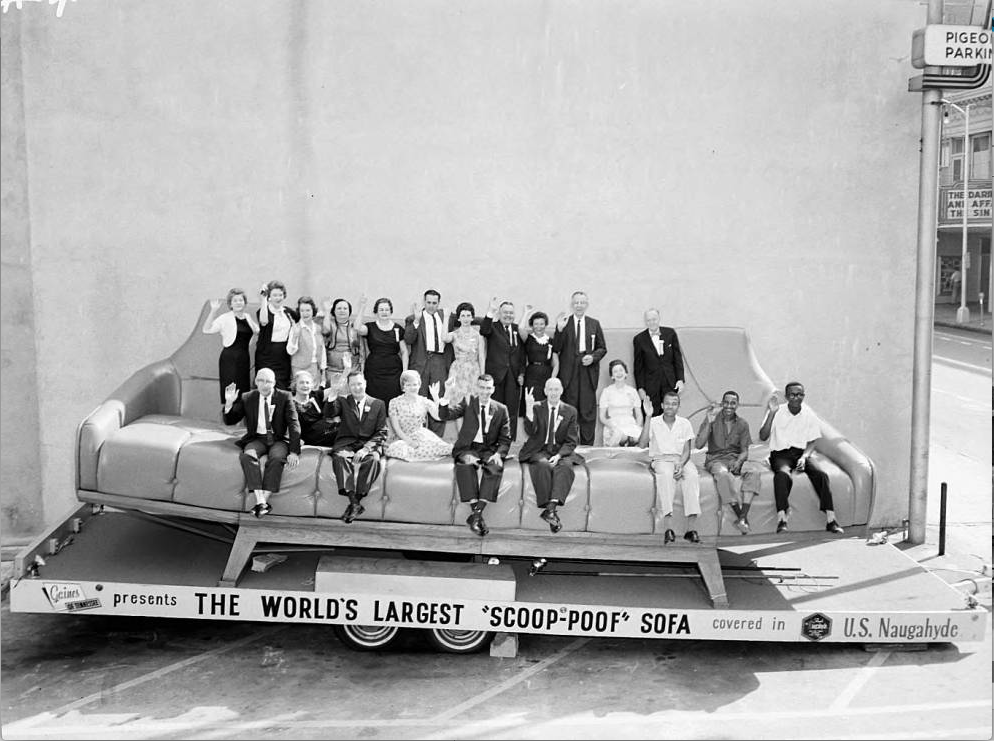
More on the sponsoring company.
Posted By: Paul - Wed Dec 27, 2017 -
Comments (8)
Category: Excess, Overkill, Hyperbole and Too Much Is Not Enough, Furniture, Interior Decorating, 1960s
Cosmic Welcome Mat
The latest from artist Jonathon Keats: a "cosmic welcome mat" to greet visitors from outer space. The mats will be placed at various locations around the Bedford Park campus of Flinders University in Adelaide, Australia, to coincide with the 68th International Astronautical Congress that will be taking place nearby. The mats will be examined periodically to check for signs of extraterrestrial visitation.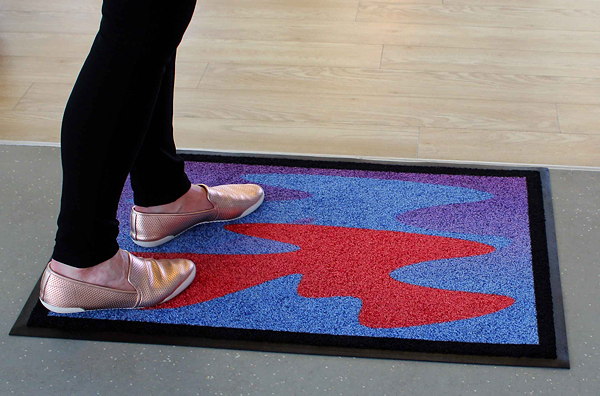
From a press release:
To counter the hostility of his species, and to communicate hospitality to aliens, Mr. Keats enlisted the most welcoming of human inventions. His cosmic welcome mat, developed in consultation with Flinders space archaeologist Alice Gorman, translates the concept of welcomeness into a visual language that all sentient beings can potentially comprehend.
"In fact, the mat comes in four different versions," says Dr. Gorman. "Since we can't make any assumptions about beings we've never encountered, and certainly can't assume that they're versed in human culture, it's important to present them with different options built on different premises." For instance, one version of the mat expresses welcomeness in terms of geometric fit, while another does so by biological analogy, evoking room for growth.
Dr. Gorman and a team of Flinders students will rigorously monitor use of the intergalactic doormats, employing standard archaeological sampling techniques. The carpeting will be regularly vacuumed for sediment. Comparison of sedimentary deposits can provide important data about how effectively welcomeness has been communicated by each design. These data will inform future iterations of the mat, slated for distribution worldwide, and potential future deployment on the International Space Station.
The concept reminds me of the various UFO landing ports that have been constructed throughout the world, such as the one in Lake City, PA. Also relevant is Douglas Curran's book, In Advance of the Landing, about objects built by people in anticipation of the arrival of extraterrestrials.
More info: flinders.edu.au
Posted By: Alex - Sat Sep 23, 2017 -
Comments (1)
Category: Aliens, Art, Furniture

| Who We Are |
|---|
| Alex Boese Alex is the creator and curator of the Museum of Hoaxes. He's also the author of various weird, non-fiction, science-themed books such as Elephants on Acid and Psychedelic Apes. Paul Di Filippo Paul has been paid to put weird ideas into fictional form for over thirty years, in his career as a noted science fiction writer. He has recently begun blogging on many curious topics with three fellow writers at The Inferior 4+1. Contact Us |




